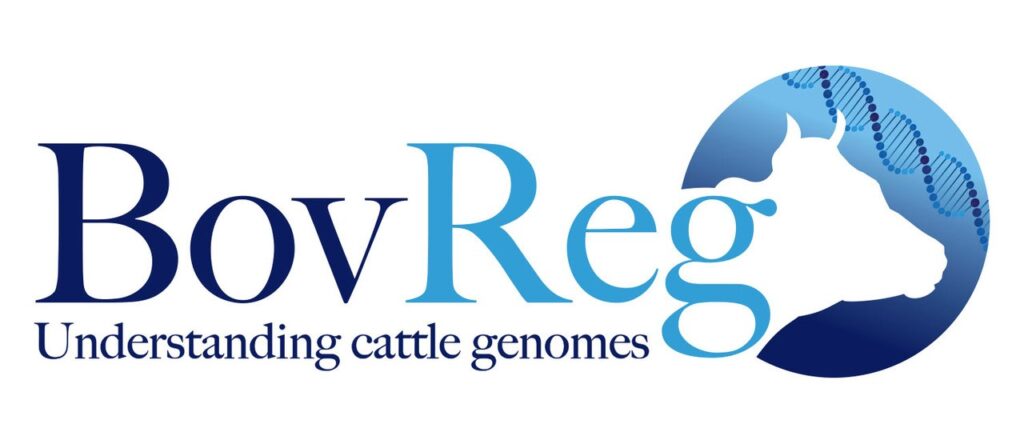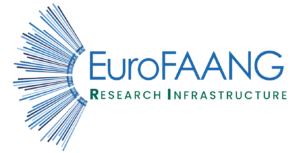Work Package 4
Development of a framework for biobanking and use of in vitro cellular models
Work Package 4 will tackle the main barriers that preclude a more widespread and harmonised use of in vitro cellular models for fundamental and pre-competitive G2P research in terrestrial and aquatic farmed species. It has three main objectives:
- To establish a European biobanking framework to share resources of tissues and cells, including genome edited cell lines, from terrestrial and aquatic farmed animal species.
- To establish a durable network enabling scientists to carry out as many as possible steps of G2P research using in vitro cellular models.
- To popularise the use of such models as a case for pre-competitive research on G2P.
The first goal was to create a list of existing biorepositories to be connected via a common portal. It is necessary to upgrade the existing national tissue sample repositories in order to facilitate the cryopreservation and sharing of tissues, germplasms, stem cells, as well as edited cell lines together with WP5. The European facilities storing sample collections that are open to collaboration along with their current and potential future users within EuroFAANG have been mapped and several of them need to be upgraded. The conclusions from the D4.1 survey, whose findings are detailed in the deliverable text, is that there is a strong interest and an important potential in Europe to set up biobanking services for cellular models in order to support genotype to phenotype research in farmed animals. Even without any additional funding, a core set of a few biobanks would be ready to contribute in the short term, while many more would join if the development of EuroFAANG as a research infrastructure could help them to get the necessary equipment and the training. To understand the steps to be undertaken to connect this core set as well as the interested biobanks to a common portal, an additional survey has been sent to get more precise information on their information system, quality management and fee policy procedures. Analysis of the answers is on-going. The challenge ahead is to connect these biobanks in order to build a network. Contacts with those biobanks will be maintained over the duration of the EuroFAANG research infrastructure project.
The second goal was to develop access procedures linking with WP2 in the form of a set of biobanking rules for future TNA. Common descriptors of tissues and cells and related services (such as resource distribution, on-demand elaboration, storage and distribution of edited cell lines and tailored cellular models) had be established and provided to the EuroFAANG Data Portal (WP3). D4.2 (submitted) aimed to derive a prototype that would manage access to biobank collections in EuroFAANG. The user interfaces of biobanking infrastructures of the partners and in Europe, including all steps to be followed by the user and by the biobank with joint agreement established by a Material Transfer Agreement (MTA), were compared (as detailed in the D4.2 text). The information obtained from the portal of CRB-Anim and of each considered RI can be summarized as follows: 1) Steps to be followed by users should be based on identification, request for information, searching samples (on the basis of standard metadata), purpose and initiation of request, sample order or deposit requests; 2) Steps to be followed by the biobank to process request with joint agreement established by a MTA should be based on assessment and validation of request, including IP issues, implementation of request. A prototype for TNA applications in EuroFAANG (WP2) was proposed.
The widespread use of in vitro cell models for general biological research (G2P) is hindered by the need to adapt existing lab methodologies across different species and improve reproducibility. The evolution of methodologies, such as more complex models closer to organ/biological functions and high-throughput solutions for phenotyping and genetic manipulation, is challenging. Thus, a shared need is to achieve adequate standardization of the production, biobanking, quality control, characterization, and manipulation of in vitro models.
To address this need, a European network of laboratories has to be established, including those specialized in in vitro modeling for different species and those developing models for G2P research in terrestrial and aquatic agronomic animal species. The build of a European network of laboratories was started in this period by outreaching to other European and national projects and networks. A dedicated Steering Committee (renamed “in vitro Think tank”) overseeing the planned activities was established by INRAE (MS9, achieved) as reported above. The number of members of the committee will be increased to cover wider expertise, also based on the inputs collected through the survey on technological advancements in the field of animal agriculture made by WP1 (D1.3). A partial merging of the WP4 and WP5 Think tank is planned to maximize the efficiency of forthcoming activities of interest to both Think Tanks. To provide a framework for the future training activities of the EuroFAANG infrastructure, a summer school was held by INRAE (MS10, achieved in 2023) with the participation of other EuroFAANG partners, as reported above. A common conclusion from the final round table discussion was that in vitro models are extremely useful to complement in vivo experiments, but not to fully replace them. To bridge the gap between in vitro and in vitro phenotyping, there is a lot yet to be done for establishing and validating highly complex cellular models. The task ahead is the planning of the theoretical and practical workshop aimed to share first standards, that provides an essential ground to the D4.4 (Standardized biobanking protocols adapted to species and material origin for input in WP3) due in June 2025. The workshop has been scheduled for Feb. 2025, its organization will rely on the positive experience of first summer school.
The main goal of Task 3 is outreach and partnership with industry. So far the following actions have been taken:
Stakeholder Engagement:
- EFFAB actively collaborated with various industry partners, fostering knowledge exchange and alignment of goals. This engagement with stakeholders is crucial for building strong relationships and ensuring that the project’s objectives resonate with industry needs. It aligns well with the goal of outreach and partnership by involving relevant external parties.
Network Creation:
- During the initial period, EFFAB successfully established a network of potential partners. This network serves as a collaborative platform for sharing expertise, resources, and insights related to G2P research. Such a network is essential for creating meaningful connections with industry players, which directly supports the objective of outreach and partnership.
Dissemination Efforts:
- EFFAB organised several events to disseminate information about the project and its objectives. These events reached out to diverse potential partners, fostering awareness and interest. Effective dissemination is a critical aspect of outreach, as it ensures that relevant stakeholders are informed and engaged.
In summary, the activities carried out by EFFAB align well with the need for outreach and partnership with industry. EFFAB has taken steps toward building meaningful collaborations in the industry by actively engaging stakeholders, creating networks, and disseminating information.

Keep in touch!
EuroFAANG projects

GEroNIMO
Go to website
BovReg
Go to website
Rumigen
Go to website
GENE-SWitCH
Go to website
HoloRuminant
Go to website


